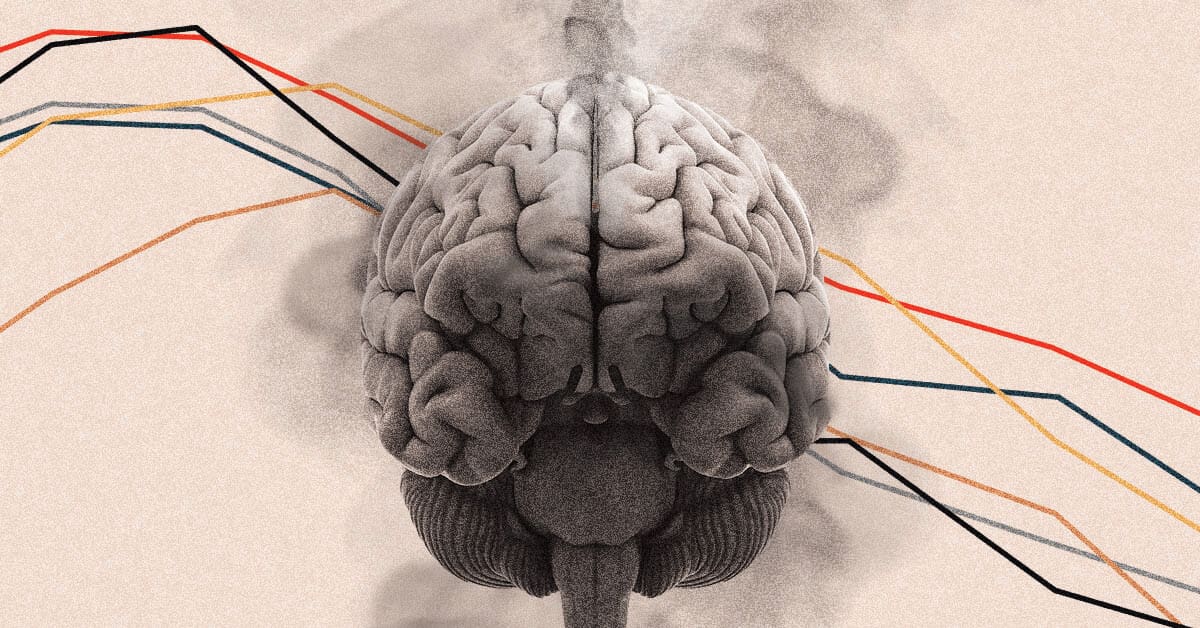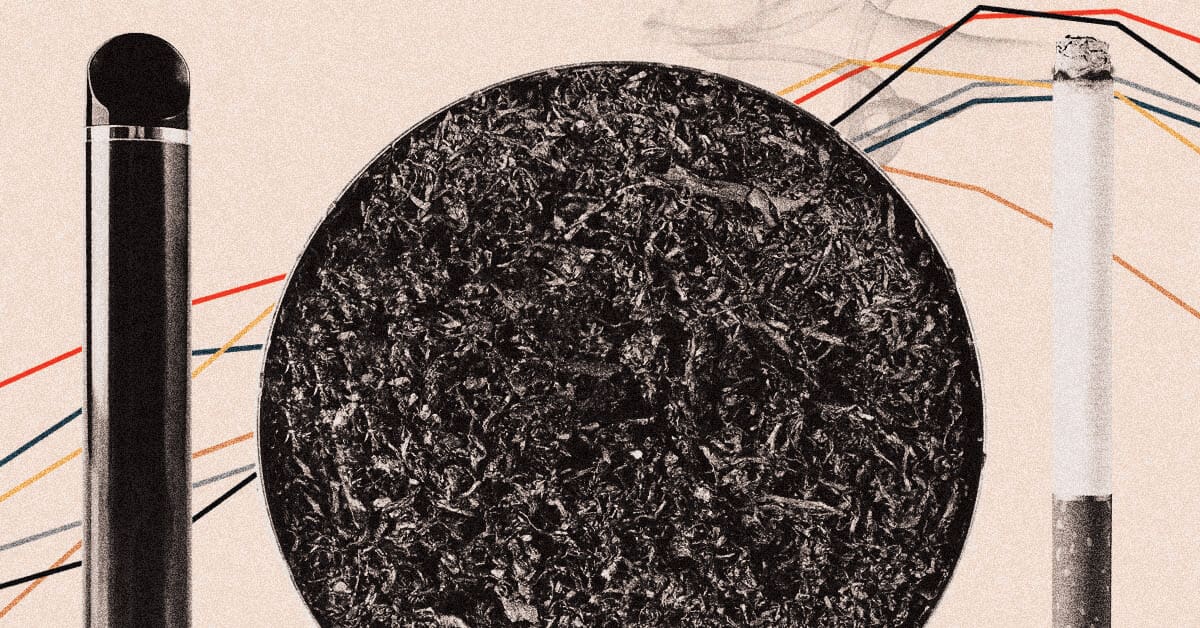Nicotine is a chemical compound taken from tobacco plants. It travels to the brain in seconds, stimulating the pleasure response and tricking unsuspecting users into thinking they “need” nicotine. In short, it’s the chemical that keeps you hooked on tobacco — and it can cause a lifetime of addiction.
As more and more products hit the shelves, marketing different health benefits and cessation advice, it’s important to know all the information on percentages and risk factors.
So, how much nicotine is in cigarettes, cigars, smokeless tobacco and vapes?
Product Concentration
Here’s a high-level breakdown on the concentrated nicotine in different products.
| Product | Amount of nicotine (average) |
| Cigar | 13.3–15.4 mg (large cigars) |
| E-cigarette | 0.5–15.4 mg (15 puffs) |
| Pipe (tobacco) | 30.08–50.89 mg |
| Chewing tobacco | 144 mg (whole can) |
| Hookah | 1.04 mg (per puff) |
Source: Helpline.com
Cigarette Nicotine Levels
The level of nicotine in cigarettes can vary greatly from brand to brand. On average, each cigarette contains roughly 10-12 milligrams (mg) of nicotine, or about 6 mg on the low end and 28 mg on the high end. Not every milligram of nicotine is inhaled — only about 1.2-1.8 enter the body for each cigarette smoked. So, for every pack of cigarettes, 22-36 mg of nicotine will be inhaled.
Vape Nicotine Levels
The range of concentrated nicotine in vapes is much larger than traditional cigarettes, and it’s often misleading. Vapes can contain anywhere from 0 mg/mL to 50 mg/mL depending on the brand. However, most vapes do not clearly state their nicotine levels, only the percentages. When comparing percentages to milligrams, a 5% nicotine vape is around 50 mg of nicotine — double the amount of a pack of cigarettes.
Here is a breakdown of the percentages versus concentrated nicotine levels of vapes per milliliter:
- 0 mg/0%
- 3 mg/0.3%
- 5 mg/0.5%
- 6 mg/0.6%
- 10 mg/1%
- 11 mg/1.1%
- 12 mg/1.2%
- 18 mg/1.8%
Smokeless Tobacco Nicotine Levels
One can of smokeless tobacco contains 144 mg of nicotine. That’s around 60 (inhaled) cigarettes. Smokeless tobacco poses different risks than cigarettes, however, its direct contact with the gums allows a quick and strong release of nicotine.
Hookah Nicotine Levels
Hookah comes in a variety of flavors and is typically smoked in a social setting. It’s generally perceived as “safer” than traditional cigarettes. However, it contains roughly the same amount of nicotine per puff as traditional cigarettes — around 1.08 mg. Because of the social nature of hookah, secondhand smoke is also a risk factor.
Pouches Nicotine Levels
Nicotine pouches, such as Zyn, deliver various amounts of nicotine through a slow and measured release. While pouches seem convenient, they are just another way for the tobacco industry to keep you hooked.
What are some other health impacts of nicotine?

Nicotine’s Risky Health Effects
Outside of the well-established risks of tobacco use, a substantial body of research has also linked nicotine, including synthetic, to a wide variety of harmful health effects, such as:
- Increased risk of heart attack and cardiovascular disorders
- Resistance to chemotherapy and higher risk of multiple cancer types
- Elevated risk of respiratory, gastrointestinal and kidney disorders
- High blood pressure and decreased immune response
- Negative impacts on reproductive health
- Long-lasting, life-threatening addiction
Short-term side effects include:
- Irritation in the mouth and throat
- Abdominal pain and nausea
- Vomiting and diarrhea
- Increased blood pressure and heart rate
- Early symptoms of nicotine addiction, such as cravings, restlessness and insomnia
Side Effects on Developing Brains
Nicotine use also damages the human brain — especially ones that are still developing. To make matters worse, synthetic nicotine products typically come in flavors young adults already love, which further increases their appeal, along with the risk for nicotine addiction.
Nicotine’s Effects on Mental Health
In addition to addiction, underage nicotine use (both synthetic and tobacco-derived) can cause and/or worsen:
- Anxiety and depression
- Impulsivity, irritability and mood swings
- Problems with concentration
- Learning and memory difficulties

The Bottom Line
If a product contains nicotine, it’s addictive. Dipping, smoking and vaping will all make the body start to believe it needs nicotine to survive, and all three will be challenging to quit.
If you, or someone you know, are thinking about quitting tobacco, the Oklahoma Tobacco Helpline is available for all Oklahomans. Call 1-800-QUIT NOW or visit OKhelpline.com to start your quit journey. Learn what it is like to quit vaping.
